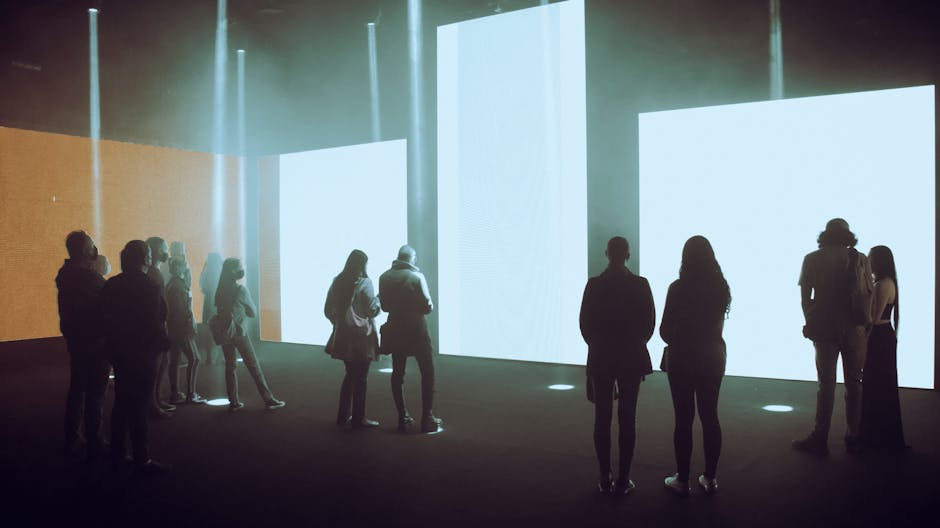Digital art stands at the intersection of creativity and technology, reshaping how we perceive artistic expression. As pixels replace paint, this modern form of art challenges traditional boundaries, inviting us to reconsider what constitutes true artistry. While opinions vary, the conversation around digital art continues to evolve, reflecting its growing significance in today's cultural landscape.
Defining Digital Art
Digital art, born in our tech-savvy age, plays with creativity in pixels instead of paint. It spans various forms – digital paintings, animations, 3D renderings, and more. While traditional art uses brushes on canvas, digital art grooves with software, yet both share a common core – imagination and skill.
In the art community, opinions are diverse. Some argue a computer's involvement cheapens the outcome, forgetting that mastering digital software is as challenging as handling a brush. Comparing digital art to traditional art is like comparing apples to oranges:
- Traditional art thrives in studios with natural light
- Digital art flourishes in the glow of LED screens
- Traditional artists enjoy the tactile experience of paint
- Digital artists find magic in filters and layers
Digital art now coexists with classics in galleries and homes through screens and interactive displays. Despite early skepticism, it's solidified its presence in the art market with pieces that fetch high prices at auctions. As it takes its place alongside oils and pastels, digital art challenges us to question what art can be, pushing boundaries and inviting us to rethink creativity itself.

Market Value and Perception
The market for digital art has seen a significant shift, especially after high-profile sales like Beeple's $69 million work "Everydays: The First 5000 Days." Such eye-catching prices have moved digital art from niche internet corners into mainstream auction houses, attracting collectors with art unconstrained by physical limitations.
Public perception of digital art's market appeal varies. Some question if it has the gravity and authenticity of traditional masterpieces. They wonder if an art form that can be easily replicated digitally can have the same integrity as a physical canvas.
Yet, there's no denying the growing favor for digital creators. Platforms offering fractional ownership through NFTs are democratizing art ownership, inviting a broader audience to participate. This approach appeals to tech-savvy younger generations, who focus on blockchain-stored provenance rather than traditional pedigrees.
The debate about digital art's legitimacy as 'real art' continues. Critics argue it's cheapened by tools like CGI, while supporters point out the painstaking attention to detail required in digital artistry. As museums incorporate virtual galleries and digital exhibitions, the conversation is shifting from "Is it art?" to "How do we navigate this exciting digital frontier?"
Technological Influence on Art
Technology acts as both muse and tool in digital art, opening new avenues for creative expression. Artists now use stylus and tablet as extensions of their creativity, with each digital stroke blending human intent and machine capability.
Software like Adobe Photoshop, Illustrator, and Procreate have become the new artist's studio. These digital tools offer a playground where artists can experiment with texture, gradient, and form in ways impossible with traditional media. The flexibility of digital mediums allows for endless trial and error without wasting physical resources.
Technology doesn't just assist in creation; it inspires new forms of art. Generative and algorithmic art, where code and creativity intertwine, showcase the unique possibilities of digital media. Programs like Processing and Blender empower artists to create entire digital universes.
These advancements redefine what it means to be an artist. Digital artists, like their traditional counterparts, strive for authenticity but work in a realm where reality and imagination blur. The rise of AI tools further complicates this landscape, raising questions about the role of human creativity in art creation.
As we continue into this digital era, technology becomes both the scaffold and canvas for art. It challenges us to rethink creative possibilities, embracing a future where art is as limitless as the imagination that inspires it.
Criticism and Acceptance
Digital art faces ongoing debate between innovation and tradition. Critics argue it lacks the soul and visceral experience of traditional techniques, while digital artists defend their craft's legitimacy and power to communicate through pixels.
The core of opposition often stems from fear of change and nostalgia for art's traditional rarity and value. Digital artists counter with concepts like NFTs and blockchain technology, arguing these provide digital scarcity and integrity.
"Digital painting isn't painting."
– Charles Thomson, co-founder of Stuckism
Skeptics question the skill involved in digital art, sometimes equating it to playing a video game. However, this overlooks the technical expertise required to master complex digital tools and create algorithmic art. Digital artists are redefining artistic skillsets, merging technology with traditional art theory.
While acceptance of digital art is growing, the discourse continues. This ongoing debate challenges artists to refine their voices and invites a broader, more inclusive view of what art can be. It prompts us all to question the nature of creativity and art itself, promising a future rich with artistic possibilities.
Digital Art in Exhibitions
Exhibiting digital art in galleries and museums blends traditional curation with cutting-edge technology. Curators face the challenge of creating experiences that honor both the technological and artistic aspects of digital works.
Galleries now transform into immersive spaces where digital pieces demand environments that engage multiple senses. This shift requires robust technological infrastructure, from projectors and touchscreens to VR headsets, all of which must integrate seamlessly with the gallery's aesthetic.
Interactive installations turn viewers into participants, creating experiences that respond to audience presence. This interactivity adds a new dimension to art appreciation, allowing for a unique engagement between artwork and viewer.
Digital art's transient nature poses preservation challenges. Unlike traditional art, digital works must be constantly updated to survive technological evolution. This impermanence is both a defining feature and a curatorial challenge.
Despite these hurdles, digital art opens new possibilities for exhibitions. Virtual and augmented reality allow for borderless galleries, reimagining the boundaries of art spaces. The key lies in balancing technological marvels with emotional resonance, ensuring that digital art retains its power to move and inspire amidst the digital spectacle.
As galleries embrace both classics and algorithms, digital art is cementing its place in the art world. Curators become conductors, harmonizing technology and creativity to create memorable, innovative art experiences.

As digital art gains recognition, it prompts us to redefine creativity. This evolving medium broadens artistic expression and invites appreciation for the innovation driving it. Embracing digital art opens us to new possibilities that enrich our cultural mosaic.
- Thomson C. Stuckism: The Manifesto. Stuckism International. 1999.
- Beeple. Everydays: The First 5000 Days. Christie's. 2021.
- Cattelan M. Comedian. Art Basel Miami Beach. 2019.





















